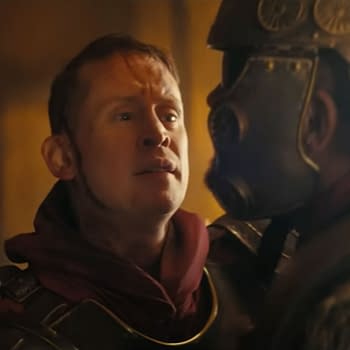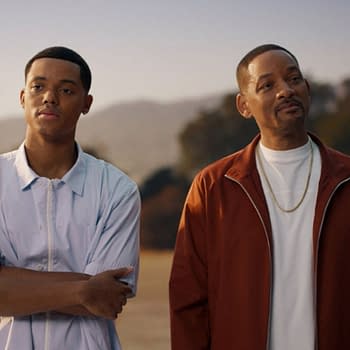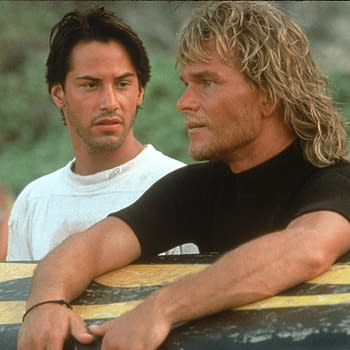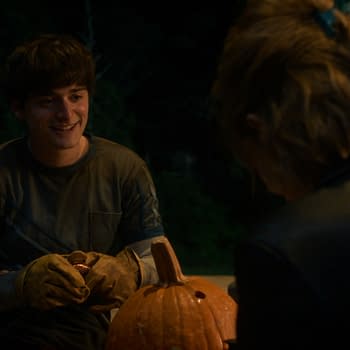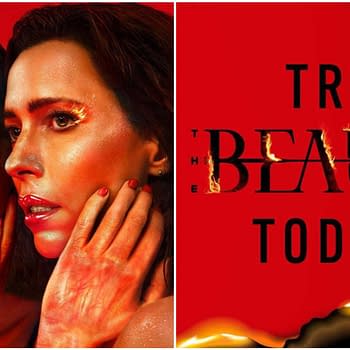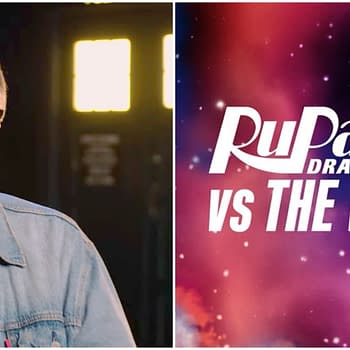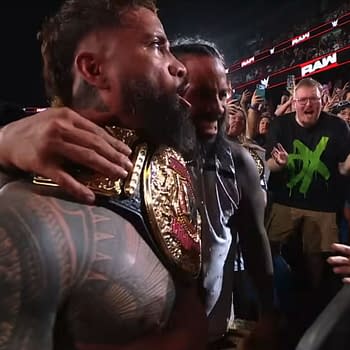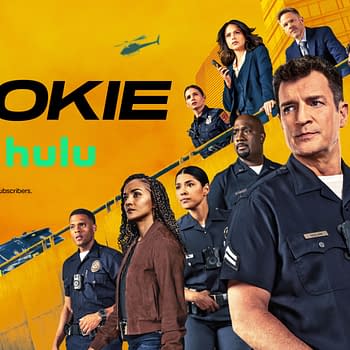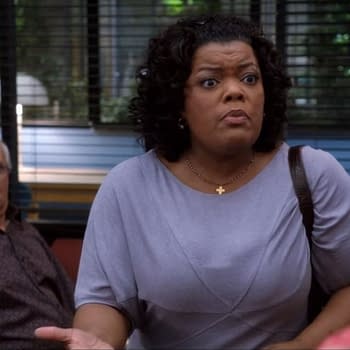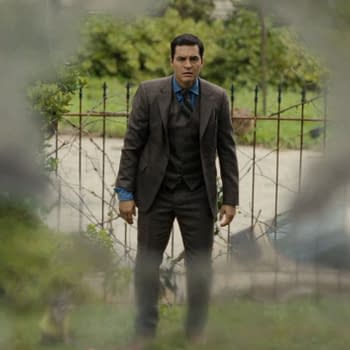Posted in: TV | Tagged: Crypt TV, eli roth, exclusive, interview, Jerome Velinsky, John Ros, meta, Tara Lee, The Faceless Lady
The Faceless Lady Star Tara Lee on Embracing Meta's VR Horror Series
Tara Lee (The Fall) spoke with Bleeding Cool about the Meta & Crypt TV VR horror miniseries The Faceless Lady, its cast, filming, and more.
Article Summary
- Tara Lee delves into VR horror with Meta's series 'The Faceless Lady'
- Ireland's 17th-century folklore inspires this contemporary VR adaptation
- VR filming requires theater-like presence and innovative techniques
- Cast chemistry and unique storytelling enhance the immersive experience
Tara Lee is always looking to challenge herself on the screen and sound worlds as an actress, singer-songwriter, and music producer. Some of her best-known work includes the RTE series Raw, The Fall (available on Netflix), BBC's EastEnders, and ITV's The Suspect. She also provided vocals (and demonic voices) on Warner Bros Evil Dead Rise (2023) and Gravitas Ventures' Love Spreads (2021). Her latest is the Meta and Crypt TV's virtual reality scripted series The Faceless Lady from executive producer Eli Roth, director John Ross, and writer Jerome Velinsky.
The Ireland-set storyline is inspired by the real-life 17th-century Irish folklore of Lady Margaret Hodnett, who is said to haunt Belvelly Castle in Cork, stalking visitors through mirrors and reflective surfaces. Adapted for the modern day with a supernatural twist, The Faceless Lady follows three couples who have been invited to a medieval castle in Ireland for a weekend competition where they will either win her games or lose their lives. Lee spoke to Bleeding Cool about the intrigue of telling a 17th-century story, prepping to film in VR, working with Ross and Velinsky, castmates, conditions, and comments from Ross about how the horror genre is a perfect fit for VR.
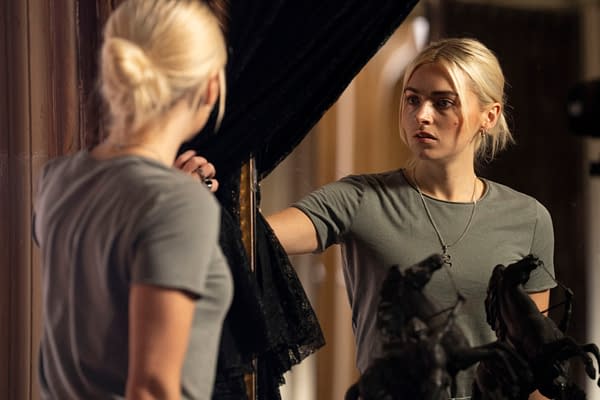
Tara Lee on Embracing VR Horror in 'The Faceless Lady'
Bleeding Cool: How did you get involved with 'The Faceless Lady,' and what intrigued you about the project?
Lee: Horror is a genre that I've always felt a strong pull towards, so when I got the breakdown through and saw that it was a Crypt TV/Eli Roth production, I knew it was something I wanted to be involved in. When I met with John, we really clicked, and I was already a fan of his work; he has the ability to ground such big concepts and make them feel tangible and real. A VR series steered in this direction felt like a cool fusion. I also just loved the story. Taking 17th-century Irish folklore that has a feminist message so strong and relevant to right now and bringing it into the present to merge with these relatable characters was intriguing to me.
Does filming for VR feel dramatically different than a more conventional project?
Yes, in many ways. John prepared us for this in advance. The biggest difference is the 180-degree camera lens that takes in your entire surroundings. It meant the camera was rarely just on you; it was on everywhere and everyone around you, too. It was more like theatre in the sense that we had to be "on" at all times. We also had to take into account things like how fast cuts would affect the experience for the viewer; we had to be mindful that long, often one-shot takes would work better, so again, you had to stay very present.
How did you break down the set with Jerome's writing and John's directing?
The scripts were ever-changing with the new VR possibilities and obstacles we faced daily, and this was exciting because it meant we all got to be heavily involved in the direction our characters were going. The entire creative team was very generous in letting the cast shape their characters in their own ways. John was always open to our ideas and would let us explore hidden layers where possible. For example, I felt there was something of an existential crisis happening with Ella that you really get a first glimpse of in episode one, where John gave me the space to have her suffer an anxiety attack whilst experiencing something alone in her bedroom. He was extremely supportive of our individuality and had a way of guiding us that just elevated things to the next level.
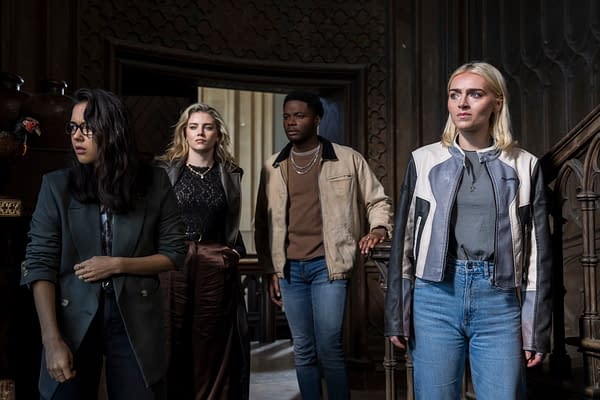
Can you speak on your 'The Faceless Lady' castmates, what they brought to the project, and the chemistry you all developed?
I have to say, every single member of the cast went somewhere unpredictable and fresh and unique and just completely claimed their characters. There were no horror tropes; we were all so involved with each other and constantly throwing ideas and lines around, finding new opportunities to play off of one another. Developing chemistry was easy; it was there from the get-go. There's a great scene with Ella and Tawni (Mei Henri) where we're searching for something in one of the castle rooms and have a moment of humor in all the devastation, and it's one of my favorite scenes I got to do. Any scene with Staz Nair was a dream and a lesson in dedication to one's craft whilst simultaneously keeping a straight face because he's such a laugh to work with. And Ned Dennehy was our resident comedian – I can confidently say he's one of the funniest people I've ever met.
What was the most difficult sequence you had during filming?
I don't want to give away any spoilers, but in episode six, I had a pretty grueling two-day shoot with a lot of stunts and heavy emotions. It was a freezing Irish winter, and it was so incredibly taxing I cried the moment we completed it. Psychologically, I had to go somewhere in episode five that required me to do a deep dive into some suppressed memories that felt mentally exhausting.
There was an exterior scene we needed to get one day and it started relentlessly raining. The usual protective equipment the cinematography team would use couldn't be applied to the VR camera, which looks overhead in its 180-degree span and would catch anything placed above it in the frame. The team, literally on the spot, used a glass sheet to makeshift a cover for the frame that would be essentially invisible but could be cut out easily in post. Allowing the viewer to look up and see the rain coming down on them, a VR first.
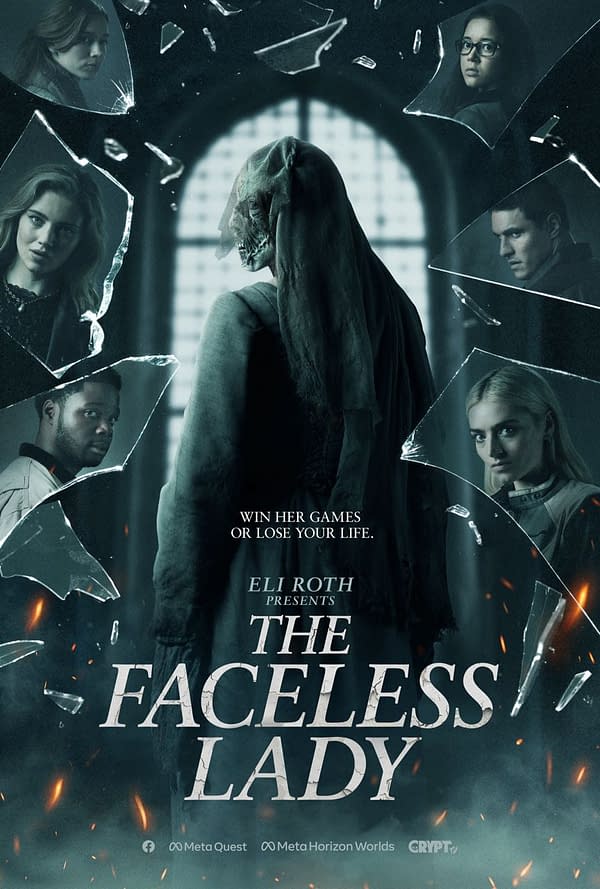
Do you feel VR is more advantageous to one genre, such as horror? Is it a more intense experience?
Ross: VR is perfect for any project where the surroundings tell the story, where the setting is a character in itself. Take a horror movie like "The Shining." The wide-angle lensing invites you to look around the hotel and wonder what's happening within its walls. It also makes the characters smaller in frame, which adds to the feeling of isolation. VR's much wider field of view could enhance all these effects. It can immerse you in an environment totally in a way that 2D cinema can't.
The first two episodes of The Faceless Lady, which also stars Staz Nair, Daisy Jelley, Ogo Onwughalu, Sophie Rebecca-Jones, and Ned Dennehy, are available to stream on Meta Quest, with new episodes every Thursday.







